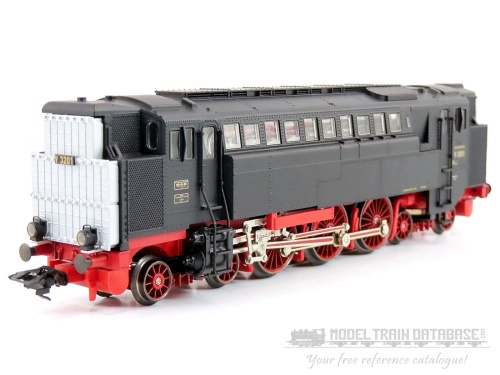The German State Railroad Company decided in 1924 to have a diesel locomotive with a pneumatic system for transmitting power. The development work was carried out under the leadership of the Esslingen Maschinenfabrik Company. The compressed air system for power transmission was selected, because a hydraulic system for power transmission had not yet been mastered for higher levels of output. In addition, based on experience with steam locomotives it was believed that a pneumatic power transmission was a more efficient solution. A specially developed two-cylinder piston air compressor was driven by a MAN submarine diesel motor with six cylinders. The frame and valve gear were basically that of a steam locomotive. Instead of steam, however, compressed air heated to approximately 350° Centigrade (662° Fahrenheit) was conducted into the usual locomotive cylinders.
The construction of this locomotive started as early as 1924, but lasted for over three years before the first tests could be performed. After extensive experiments and changes delivery was made to the DRG in November of 1929. This locomotive was in use on routes around Stuttgart for several years.
Diesel Compressed Air Locomotive. Former German State Railroad Company (DRG) class V 32. With digital, high-efficiency propulsion. Metal body and frame. 3 axles powered. 2 traction tires. Electronic reverse unit. Dual headlights that change over with the direction of travel. Standard coupler pockets at both ends with close couplers. Length over buffers 18.5 cm (7-1/4").
Produced as a one-time series only in 1995.

